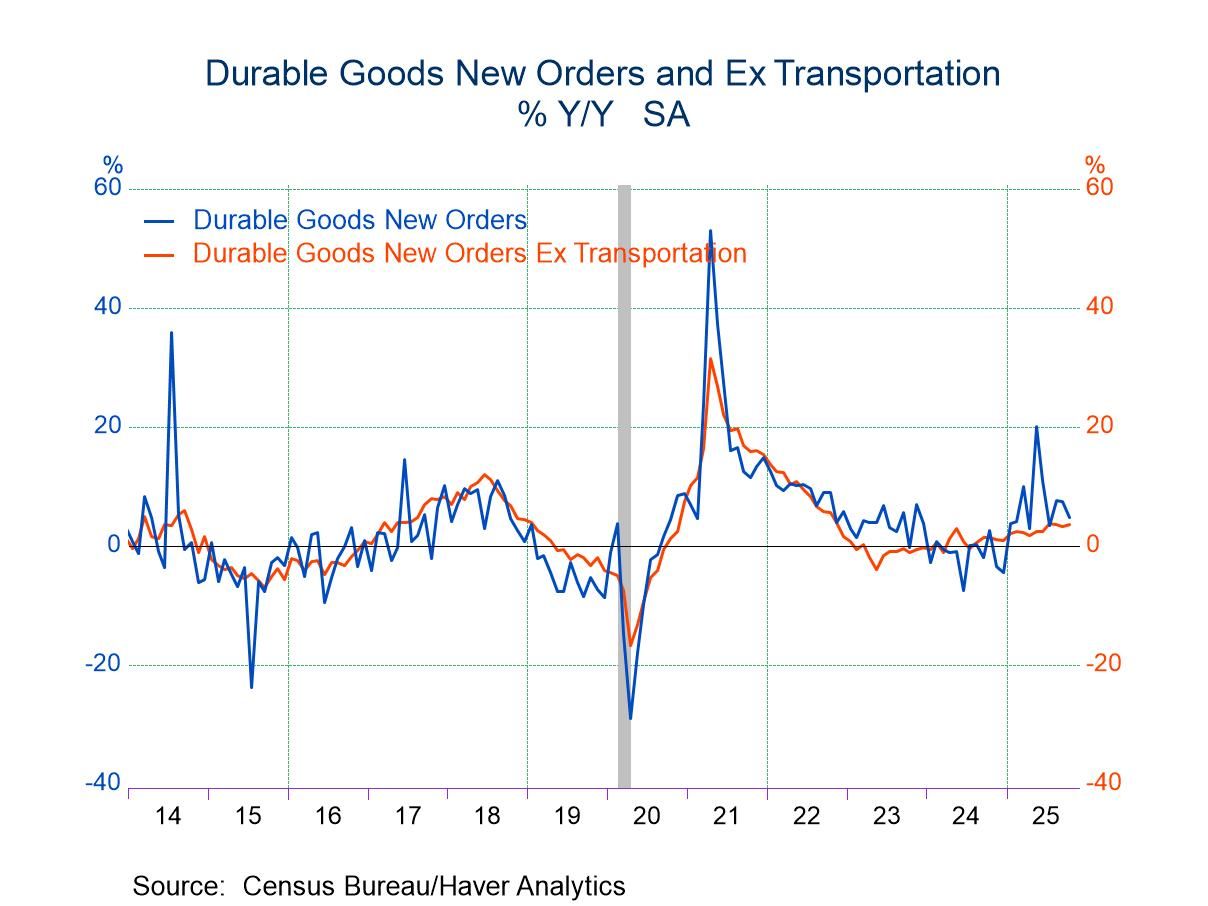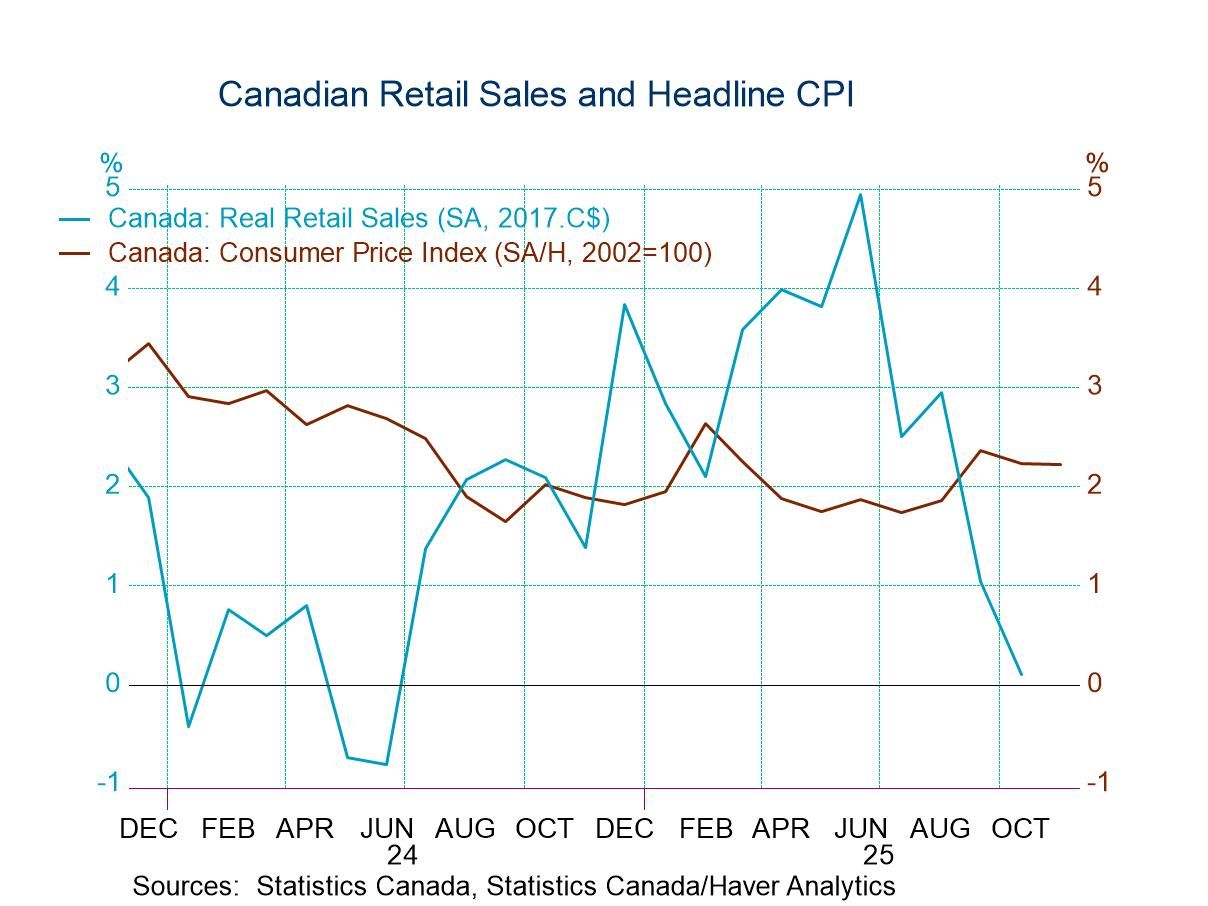 Global| Mar 25 2022
Global| Mar 25 2022Chika Boom Chika Bust: Money Supplies

Tight money isn't funny – but is it loose or tight? This month we encounter a bit of a dilemma in analyzing money supply growth. In the European Monetary Union (EMU), year-over-year M2 growth is at 6.8%. In the U.S. M2 money growth is at 11%, in the U.K. it's at 6.5%, and in Japan its pace is 3.6%. All of these are relatively robust rates of growth for nominal money supply. Money is plentiful. The question, however, is whether money has been too plentiful.
Inflation classically is described as too much money chasing too few goods. These statistics suggest that there has been plenty of money out there; however, in the wake of the pandemic, certainly in the U.S. where a lot of support monies were given to people who weren't working and weren't creating any output, there has come to be a maintenance of spending because there was a maintenance of income. However, there was a shortfall of supply and so with an abundance of money what we have is situation where there has been too much money chasing too few goods and probably more 'too-few goods' than 'too-much' money.
To a considerable extent, there seems to be a physical goods/services supply problem. The bigger problem seems to be that supply has been impeded and there haven't been enough goods and services around for people to purchase. Certainly, money supply statistics confirm in the sense that the 12-month growth rates are some of the lowest growth rates that we've seen from these countries, comparing the 12-month pace to the two-year average pace or the three-year average. Thus, the increase in money supply isn't particularly new nor is it robust and there is no acceleration.
Real money balances On the other hand, we can look at what's been going on with real monetary balances. This measure involves looking at nominal money supply growth with inflation subtracted from it. When we look at this measure, we find that over three-months and, for the most, part six-months real money balances are shrinking in the European Monetary Area and the U.K. In the U.S., three-month growth is negative but not six-month growth. For Japan, money-growth rates hover around 1% for real balances on this horizon.
Looking at the year-over-year rates, the European Monetary Union's money growth is 0.9%, in the U.S. it's 2.9%, in the U.K. it is 1.1%, and in Japan it is 2.6%. All these growth rates, of course, are substantially below their respective nominal counterparts because they're constructed by taking the nominal growth rate and subtracting inflation, at a time that inflation is accelerating. But what we see is that money supply growth has not been adequate to compensate for inflation and we're seeing that the growth in real monetary balances is barely enough to fuel any kind of decent real growth in many of these countries The U.S. is the marked exception since for the U.S. real balance growth is still at 2.9% over 12 months, which is still relatively robust. However, over shorter periods, real balance growth is impeding economic growth.
Credit in EMU Looking closer at the European Monetary Union, we see the credit to residents in nominal terms is up by just 4.1% over 12 months and by 4.4% for credit to the private sector. Look at these two measures, convert them to real terms, and the results change markedly. Credit to residents is falling 1.7% year-over-year and private credit is falling by 1.4% year-over-year. Clearly there is a pull-back in credit growth that is now becoming a drag on economic activity. While central banks haven't raised interest rates aggressively, they have controlled the growth rate of money supply and with that, the increase in inflation is creating a drag in terms of the provision of real money balances and real credit flows in the economy. That creates some braking effect on its own.
Oil trends The far-right hand column of the table also presents statistics on oil prices and there we see that oil prices are up by 56.1% over 12 months and this is for West Texas Intermediate (WTI) oil prices. Over 12 months, that same statistic, converted to real terms converted using the U.S. CPI, decelerates to a 44.6% gain. However, over three months and six months, the growth in real balances steps up from that 44% pace to growth rates in the 60% range.
There is no doubt in the age of Covid central banks were relatively easy with their money and credit growth, but fiscal policy was highly stimulative as well. Since inflation has picked up and there's concern about it. Central banks have paid a little bit more attention to money growth and some of them have started to raise interest rates and this is having some further impact on slowing the rate of money supply growth.

A new game in town These statistics do not scream that there has been monetary excess, rather they seem to point the finger a little bit more at inflation as the culprit for reducing the growth in real money balances and real credit balances. Since money growth has decelerated and not accelerated, that suggests that the growth of inflation came from someplace else other than being caused by money. Monetarists are likely to dispute this with some reference to 'variable lags' but I do not find that compelling since the supply story seems such much more germane than fiddling with money growth lags. And we know there was this supply chain cut off and we know there have been strong and ongoing increases in both Brent and WTI prices for oil. In the U.S., the Fed viewed that inflation as something that would come down by itself. But the Fed has since shifted that view as it is now beginning to flirt with the possibility of a much more aggressive policy. The ECB has backtracked from this view that policy rate increases in 2022 are unlikely and is now admitting that inflation has become a problem and is overshooting and may require a dose or two of monetary medicine. Whether money supply was the 'cause' or not the only solution to slow inflation is now up to monetary policy. Both the Fed and the Bank of England have started moving rates higher. A new game is on…
Robert Brusca
AuthorMore in Author Profile »Robert A. Brusca is Chief Economist of Fact and Opinion Economics, a consulting firm he founded in Manhattan. He has been an economist on Wall Street for over 25 years. He has visited central banking and large institutional clients in over 30 countries in his career as an economist. Mr. Brusca was a Divisional Research Chief at the Federal Reserve Bank of NY (Chief of the International Financial markets Division), a Fed Watcher at Irving Trust and Chief Economist at Nikko Securities International. He is widely quoted and appears in various media. Mr. Brusca holds an MA and Ph.D. in economics from Michigan State University and a BA in Economics from the University of Michigan. His research pursues his strong interests in non aligned policy economics as well as international economics. FAO Economics’ research targets investors to assist them in making better investment decisions in stocks, bonds and in a variety of international assets. The company does not manage money and has no conflicts in giving economic advice.






